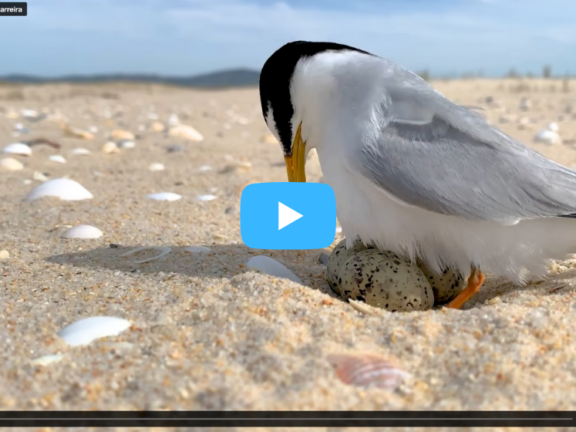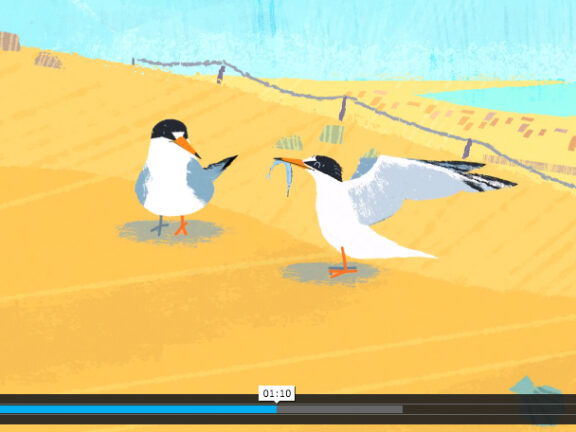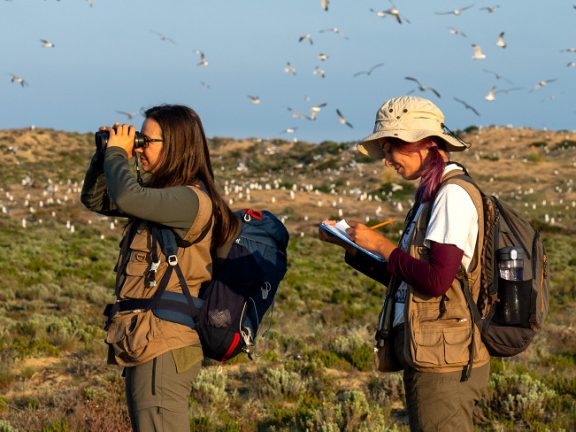In this project, we aim to assess the resilience of the Barrier Islands to climate change, the state of the populations of the Audouin’s Gull and Little Tern, and the impact of fishing on the Balearic Shearwater.
Resilience to climate change
The Barrier Islands, as the name suggests, form a barrier between the sea and the Ria Formosa, whose contours are constantly being redrawn by elements such as wind and tides. In LIFE Ilhas Barreira we are assessing how this dynamic might be affected by climate change: important information for the conservation of the Ria Formosa, for the people who live on some of the islands and for the species that depend on this special ecosystem.
Recovery of the grey dunes
The grey dunes are a priority habitat on the Barrier Islands and are fundamental to the dynamics of this ecosystem. We will protect the dune vegetation on Ilha Deserta (or Barreta) by removing exotic plants, improving the visitor trail and providing information to the public. In the most degraded areas we will test the creation of exclusion areas for Yellow-legged Gull and evaluate the recovery of the dune vegetation.
Seabird conservation
These islands are an important refuge for some seabirds: Ilha Deserta is the only place in our country where the Audouin’s Gull nests, and the islands are home to important populations of Little Tern. In LIFE Ilhas Barreira
Reducing bycatch
Bycatch affects several species, including the Balearic Shearwater, Europe’s most endangered seabird. Over the course of LIFE Ilhas Barreira, as well as assessing the scale of this problem, we will test some measures to reduce incidental catches, working together with fishermen operating in the marine area off the Ria Formosa.
we are studying the state of the populations of these species, as well as implementing measures to reduce the impacts caused by predation by invasive species and human disturbance.
Reducing bycatch
Bycatch affects several species, including the Balearic Shearwater, Europe’s most endangered seabird. Over the course of LIFE Ilhas Barreira, as well as assessing the scale of this problem, we will test some measures to reduce incidental catches, working together with fishermen operating in the marine area off the Ria Formosa.
Promoting the sustainable use of Ria Formosa
It is essential to involve stakeholders and local communities in order to integrate nature conservation with the human activities that take place in this protected area. Through training actions, the dissemination of good practices and environmental awareness and education activities, we will promote the importance of the barrier islands in protecting the biodiversity of the Ria Formosa.
Revision of the marine boundaries of the Ria Formosa Special Protection Area
Recent studies show that the breeding population of the Audouin’s Gull uses a large part of the marine area of the Ria Formosa as a feeding area, which is also used by the Balearic Shearwater during the non-reproductive period. By analysing the existing data collected during the project, it will be possible to review and propose new boundaries for the marine area of the Ria Formosa Special Protection Area (SPA) in order to effectively protect seabird species of conservation interest.



